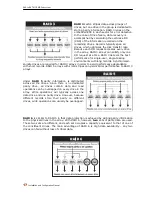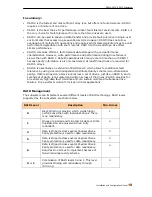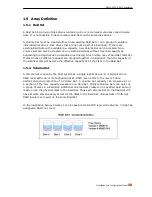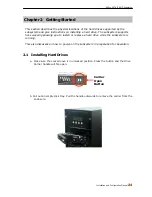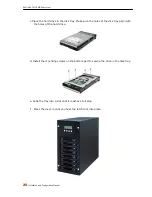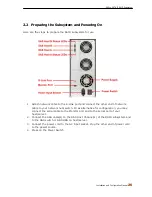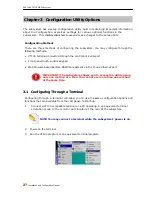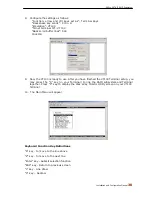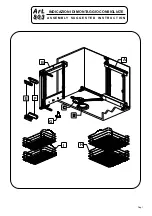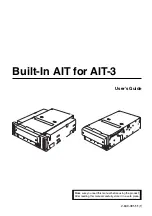
SAS-to-SATA II RAID Subsystem
Installation and Configuration Manual
16
Definition of RAID Levels
RAID 0
is typically defined as a group of striped
disk drives without parity or data redundancy.
RAID 0 arrays can be configured with large
stripes for multi-user environments or small
stripes for single-user systems that access long
sequential records. RAID 0 arrays deliver the
best data storage efficiency and performance of
any array type. The disadvantage is that if one
drive in a RAID 0 array fails, the entire array
fails.
RAID 1
, also known as disk mirroring, is simply
a pair of disk drives that store duplicate data
but appear to the computer as a single drive.
Although striping is not used within a single
mirrored drive pair, multiple RAID 1 arrays can
be striped together to create a single large array
consisting of pairs of mirrored drives. All writes
must go to both drives of a mirrored pair so that
the information on the drives is kept identical.
However, each individual drive can perform
simultaneous, independent read operations.
Mirroring thus doubles the read performance of
a single non-mirrored drive and while the write
performance is unchanged. RAID 1 delivers the
best performance of any redundant array type. In addition, there is less performance
degradation during drive failure than in RAID 5 arrays.
Dual-level RAID
achieves a balance between the increased data availability inherent in
RAID 1 and the increased read performance inherent in disk striping (RAID 0). These arrays
are sometimes referred to as RAID 0+1.
Содержание Mobileraid MR8X
Страница 1: ...DETAILED USER S MANUAL v1 0 MOBILERAID MR8X...
Страница 35: ...SAS to SATA II RAID Subsystem 35 Installation and Configuration Manual...
Страница 36: ...SAS to SATA II RAID Subsystem Installation and Configuration Manual 36...
Страница 37: ...SAS to SATA II RAID Subsystem 37 Installation and Configuration Manual...
Страница 38: ...SAS to SATA II RAID Subsystem Installation and Configuration Manual 38...
















